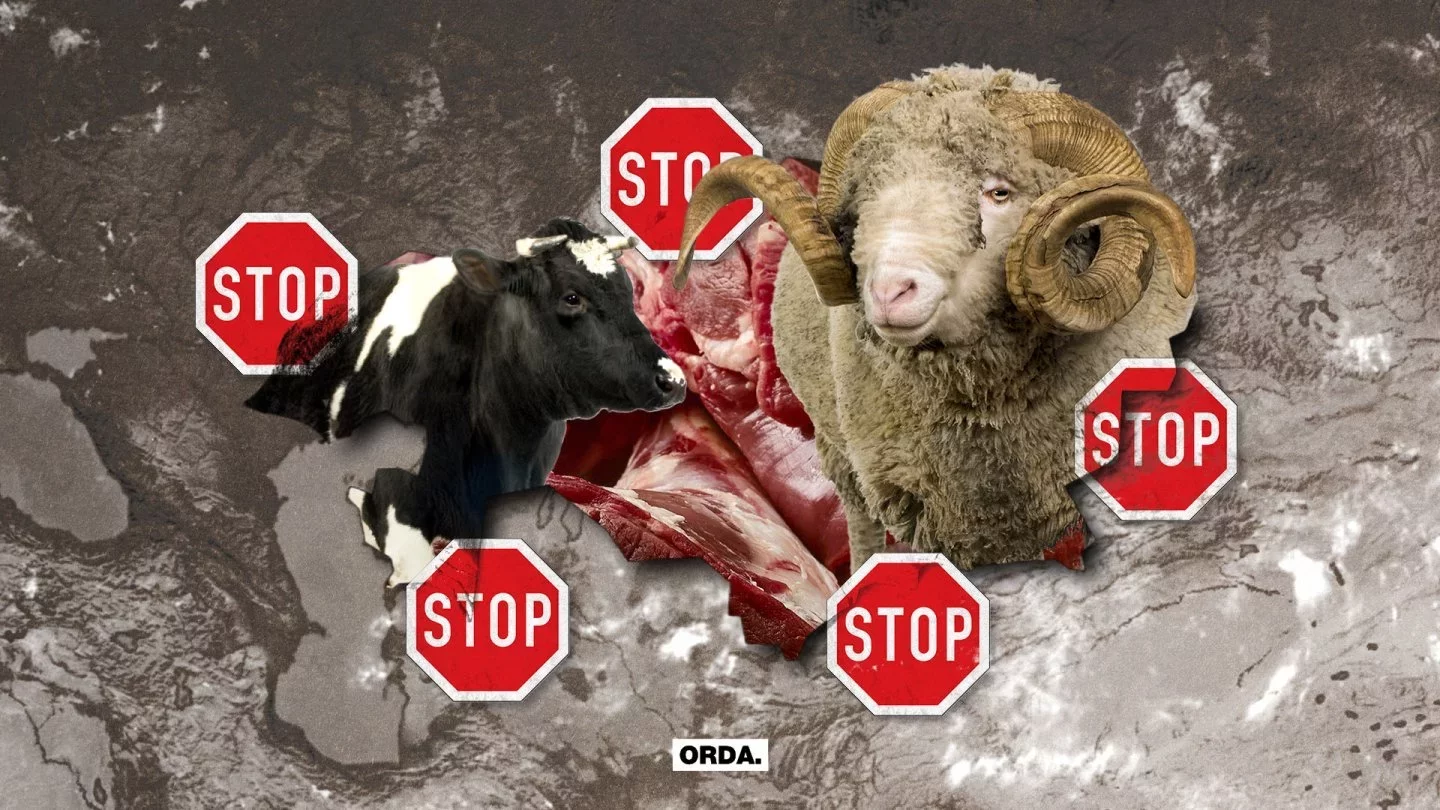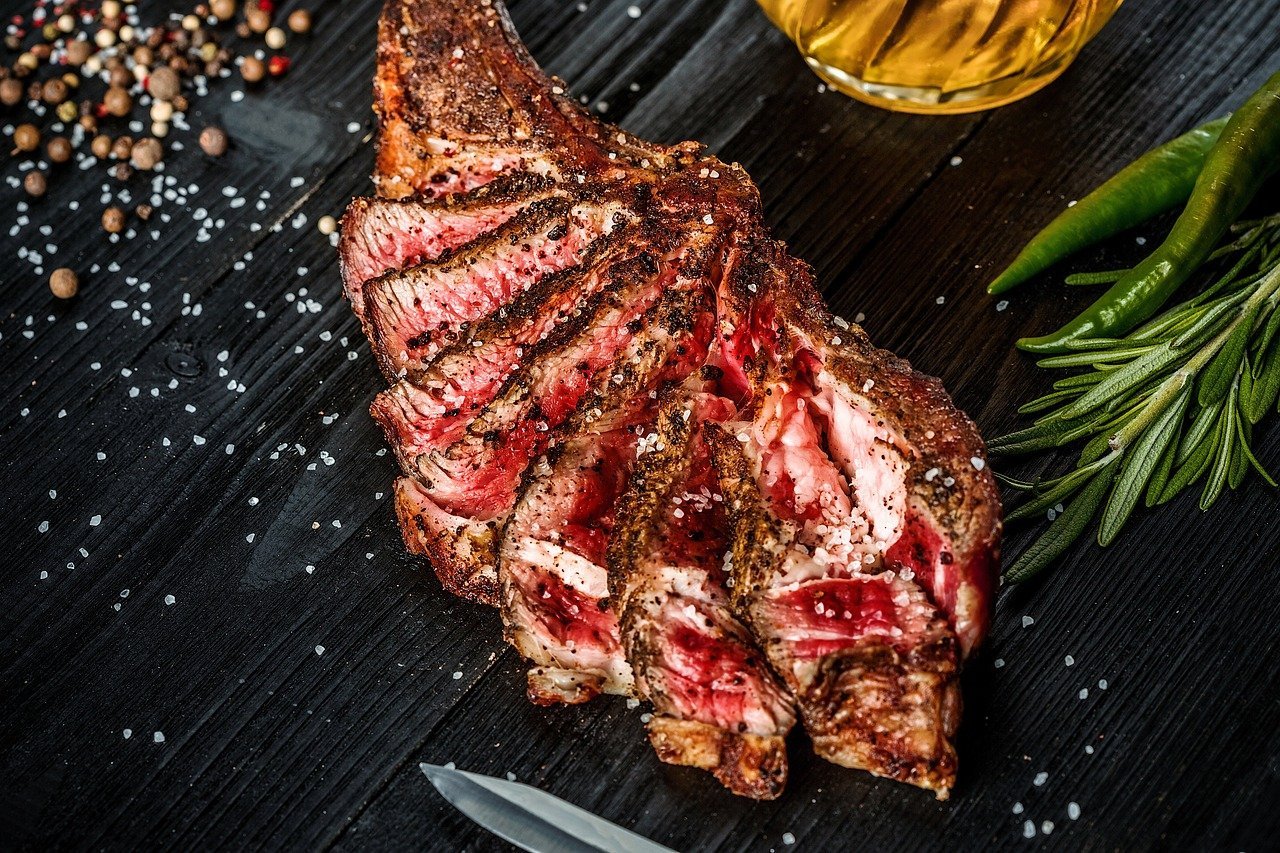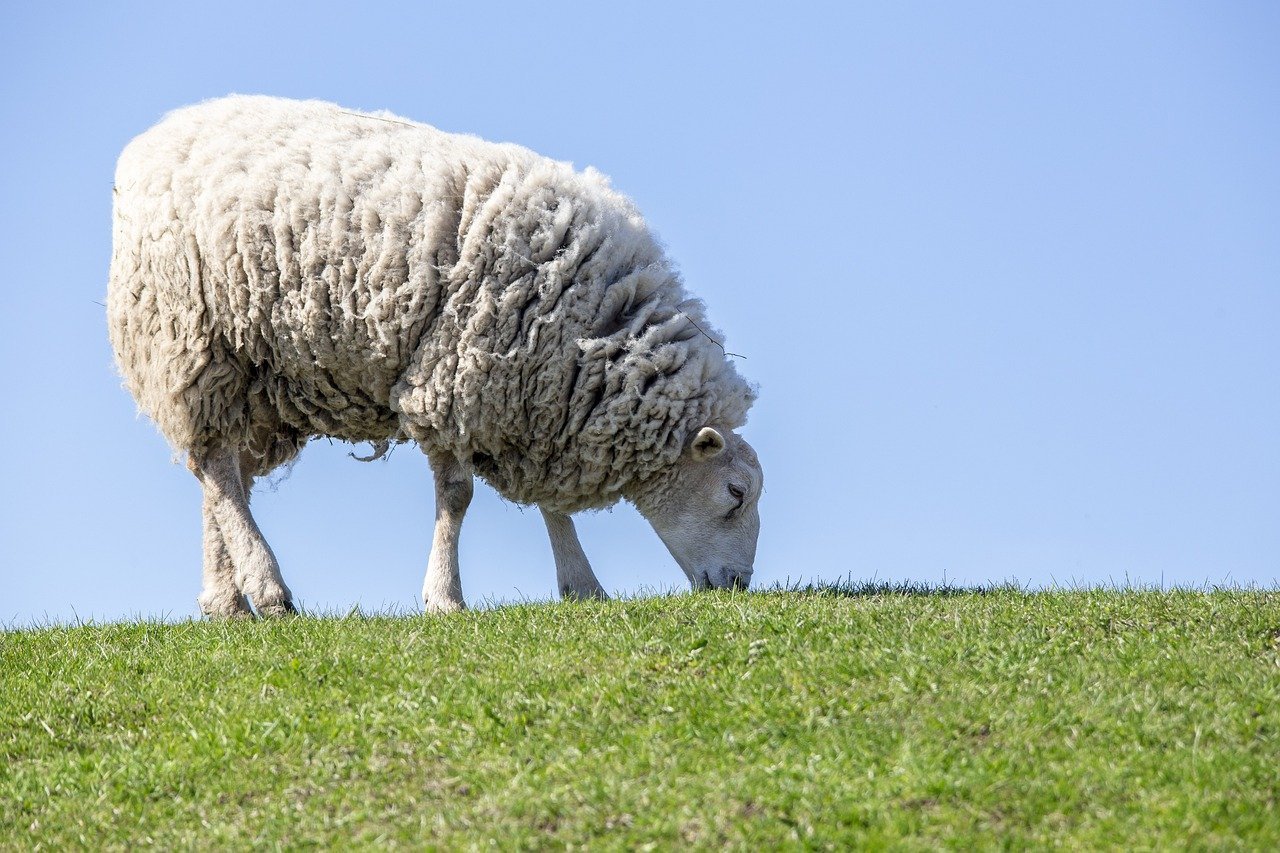Elite Meat Varieties to Rise in Price in Kazakhstan
 covercollage Orda.kz
covercollage Orda.kz
In several regions of Kazakhstan, farmers are clutching their heads. The main feed for elite breeds of cattle – hay and clover - have risen in price twofold, or they simply do not exist. Orda has learned that gray wheat imports will mitigate rising prices for ordinary meat. While ordinary farmers put their nose to the grindstone and get by, the country has all the prerequisites to become a "meat power".
Managing a chain of meat boutiques in Almaty, Alina bitterly changes the price tags. The price will grow by 15% all at once. She understands that this translate into a drop in sales and customer dissatisfaction. The reason is the twofold rise in the price of hay, a significant part of the diet for elite cow breeds that the company has on its farm.
We buy hay at a large regional market in Bakanas. In the bazar’s general chat, they write that now hay is sold only at 98 thousand tenge per ton, until recently we bought it for 40 thousand tenge. Even earlier for 20 thousand. I don't know what to do, but our cows need it for feedlotting, otherwise we will lose quality,
says Alina.
The products are supplied not only to shops, but also to restaurants. Thus, the price of steaks may rise there as well, if they do not start buying simpler and cheaper products.
 Photo pixabay.com
Photo pixabay.com
Hot Summer
Farmers in the Akmola, Almaty, Jambyl, and Pavlodar regions along with a number of districts in neighboring regions speak about the drought as well as the lack of hay. Farmer Valery Karmelyuk from the Akmola region says that there was no rain from April to July. As a result, it was not possible to produce even half of the necessary hay supplies. He doesn't remember anything like this happening in many years. There is only one solution – slaughtering cattle.
Private owners are already handing over cattle, they are handing (them - Ed.) over across the board because hay is very expensive. Now hay is 60 thousand tenge per ton, and it will be even more expensive, last year it was 30 thousand. In the near future there will be a price reduction with us, but prices at the bazaar will remain the same. And then, when there are no cattle, the state will allocate a lot of money to buy cattle.
The farmer has never received subsidies, even those that are required by law. He no longer counts on state programs. But now the situation is so bad that the reduction of the number of Angus breeds bought in the USA will become a necessity. He hopes to at least get subsidies for livestock feed.
 pixabay.com angus breed cow
pixabay.com angus breed cow
The Republican Chamber of the Angus of Kazakhstan (non–profit organization - ed.) believes that if the situation does not change dramatically, the price of beef may increase by 20%. It is economically impractical to bring in hay from other regions: 1-1.5 tons will fit in one truck, the same cost will have to be paid for delivery. There was so little rain that the farmers had already used up all their winter supplies. The situation critically depends on local officials. Some apply for subsidies, others do not. At the same time, the Ministry of Agriculture does not have a comprehensive assistance program.
The Ministry of Agriculture seems to live one day (at a time - Ed.). It only tries to put out fires. Some kind of problem will arise – they solve it, but they don't think about the future. There is no money, there is no support, export markets are closed, farmers are being dealt the finishing blow by the reduction in state support, says Dauren Salykov, director of the Republican Chamber of Angus of Kazakhstan.
The Meat Union of Kazakhstan says that the rise in price of coarse feed will affect the price only of expensive breeds and in private farms. Large farms buy wheat and concentrated feed.
Price Containment Does Not Allow Development
Chairman of the Meat Union, Askar Zhubatyrov, believes that the rise in price of hay is offset by a sharp decline in the cost of wheat exported from Russia. Sanctions have resulted in Russia losing a large sales market and it has redirected sales to Kazakhstan at reduced prices.
 Askar Zhubatyrov, photo Meat Union of Kazakhstan
Askar Zhubatyrov, photo Meat Union of Kazakhstan
If 8 kilograms of feed is needed per day to feed a cow, which consists of several components, then it will rise in price from 680 tenge per day to 720 tenge, the difference is 40 tenge. One thing is compensated through the other, Zhubatyrov calculated.
At the same time, he notes that Kazakhstan's farmers remain hostages of the current market situation, when all animal breeders are forced to stew "in their own small cauldron." Kazakhstan provides itself with meat by 108%, that is, there is no shortage in the republic. This is due to restrictions on the export of live cattle from the country. This is how the government is restraining the price in the domestic market. However, livestock owners, says the head of the meat union, are on the verge of leaving their businesses behind. According to him, 35% of cattle owners are private farmsteads, where it is simply unprofitable to raise cattle and sell the meat at below cost prices.
In the short term, we will get a decline in prices, but in the future production will fall, and we will again be import-dependent on prices abroad, says Zhubatyrov.
Another factor - other countries simply do not buy Kazakhstan's meat even in processed form due to the veterinary service’s failures, the expert explains. Outbreaks of foot–and-mouth disease have been recorded in Kazakhstan (in the Karaganda region in 2022 - ed.). As a result, during the visit of specialists of the International Epizootic Bureau (OIE, World Organization for Animal Health), Kazakhstan received an “unsatisfactory” rating. Potential foreign buyers have taken heed and stopped buying our livestock products.
Our potential beef markets are China and the Russian Federation. They have purchasing power and there is a shortage. In Russia – 300 thousand tons per year, in China – 3 million tons. Kazakhstan produces 140 thousand tons per year. No one has been buying our meat for three years.
Before the pandemic, 4 Kazakhstani plants received Chinese accreditation, but exports stopped due to the coronavirus. As a result, export-oriented factories are idle. The local market is also not appealing due to the low price of meat. If now a kilo of beef costs an average of 2,700 tenge on the shelves of Kazakhstani stores, then in China it was possible to get 6,200 tenge for it and get funds for the development of farms.
We Need to Improve The Veterinary Service
The OIE does not inspect the quality of meat, but the work of the veterinary service. They check conditions in laboratories, assess the work of veterinary inspection and veterinary stations. International experts were disappointed. At the same time, the Meat Union is confident that Kazakhstan has the potential to become an agrarian “superpower".
"The potential is huge, it is comparable to the oil sector. It is located between two major beef consumers, and could become a "meat superpower" like Australia, Canada, and the USA. There are a lot of pastures, we have the 5th place in the world in terms of areas, but they are empty. We are slowly reaching a historical maximum. It was in 1991. This is not the limit, we can produce at least 2 times more,” explains Askar Zhubatyrov.
The Veterinary Control Committee under the Ministry of Agriculture is a fully public service. There were ideas to transfer control to private hands. Their operations may have improved. Meanwhile, Zhubatyrov is confident that the civil service should be kept, as well as state polyclinics for people, so that farmers have a choice on conditions and finances.
 Photo pixabay.com
Photo pixabay.com
In the meantime, the meat union says that beef production has ceased to be profitable for 2-3 years. The situation with lamb production is better. It can be exported, although Middle Eastern countries buy according to quotas.
It is worth noting that it is not meat that accelerates inflation in Kazakhstan, but other groups of goods. According to Energyprom, in 2022 the price of meat increased by 17%. That is, a little less than everything else in the republic – 20%.
Now another threat looms over Kazakhstani livestock breeders: the falling ruble exchange rate leads to our market being filled up with meat from Belarus and Russia. The Meat Union of Kazakhstan also says that it is much worse in quality – these are 7-8-year-old cows that have worked out their life resource with milk and calves. Yet the price per kilogram catches the consumers’s more than anything.
Original Author: Maksim Skopin
DISCLAIMER: This is a translated piece. The text has been modified, the content is the same. Please refer to the original piece in Russian for accuracy.
Latest news
- Timur Kulibayev vs. New Kazakhstan: Oligarch Defends His Assets
- MP supported Imam's Statements About Kazakh Traditions
- Altyn Adam: How Filmmakers Quarreled Over Cartoon About Scythian Warrior
- "No Chance": Russian Deserters' Stories in Kazakhstan
- National Fund Earns As Much As It Spends
- What is Going on with FPL Head's Recent Appointment?
- Stati Case: Victory for Kazakhstan?
- Qataris to Spend $3.5 Billion on Construction of Plants in Kashagan
- Oil Quotas: a Blessing or a Curse for Kazakhstan?
- Plant in Kazakhstan: Swiss Investor Purchased, Legal Battle Follows
- Situation with Russian Securities in Kazakhstan Explained
- Uranium Mining Tax in Kazakhstan to Change Starting in 2025
- Chinese Oil Giant to Build Wind Farm in Kazakhstan
- Expert Explains Toqayev Greeting Xi Jinping in Particular Way
- Scandal around "Aria-Zhana Astana", Controlled by Satybaldy, Not Subsiding
- SCO Summit in Astana: What to Expect?
- Who Was Oppositionist Aidos Sadykov?
- KNB Agent Orik VS Financial Police Agent Sanych
- Nazarbayev's Relatives on Trial: Systemic Purge or Political Games?
- Fire in Greece: Luxury Yacht, Kazakhstani Oligarchs' Vacation Scandal

